10 Ways Retirement Living Will Change in the Future
Category: Home and Garden
November 7, 2018 — In our younger days we baby boomers did our bit to change the world. Now that most of our working days are behind us, will we revolutionize retirement living too? This article will review how retirement living options have changed since our teen years, and then we will prognosticate on what might be coming down the road, as the last baby boomers reach retirement age (they hit age 65 in 2031), and turn the baton over to Generation X in 2032.
Retirement, back in the day.
Prior to 1960, when Sun City Arizona opened, your retirement living options were pretty simple, probably occurring in stages. You could live in your own home (with a caretaker if you were well off), move in with one of your children, or go to a retirement or nursing home. The latter tended to be pretty bleak- surrounded by a lot of old people, maybe lucky to get your own room. Amenities tended to be limited.
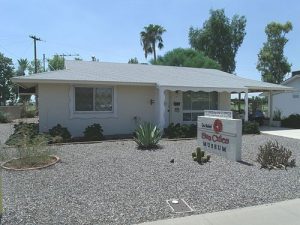
Sun City introduced the active adult community (or 55+ community) to the world, and it has been super successful. To give you an idea, from that single community in 1960 there are now thousands; in fact there are 3,761 communities in our Topretirements database, and at least 80% of those could be classified as 55+ or active adult. We estimate that there are at least 20 active communities in the U.S. with more than 10,000 residents, and 10 or more that have more than 10,000 homes. (see our Active Adult Community Directory) to find them. Some are very luxurious, while at the other end of the spectrum there are inexpensive communities made up of mobile, RV, or manufactured homes. They offer every type of housing style including condos, townhomes, garden homes, and single family dwellings. Some cater to specific groups: for example there are communities devoted to retired military, LGBT, religious/non-profit, and many other types of retirees. Active communities offer a wide range or amenities – big ones tend to have extensive offerings starting with multiple golf courses, marinas, and indoor athletic facilities. Even the smallest ones usually have at least a clubhouse and an outdoor swimming pool, plus some walking trails.
But not everyone likes the idea of living in an active adult or 55+ community. For those who don’t want to live in the home they are in now, here are some other concepts that have developed, although with less success than seen by active adult communities:
– Cohousing
– Independent living
– Pocket neighborhoods
– New urban style developments
– Golf cart centric communities
– Communities based on ethnicity
Some prognostications for the future
1. What industry people call where we live. We’ve made this prediction before – at some point the marketing people will wise up and stop calling it senior housing or senior living. Retirement community is better than retirement home, but active adult or 55+ community sounds more appealing.
2. There will never be a one size fits all solution. There will continue to be a multitude of solutions to retirement living because everybody is different. And as Gen X and Xennials begin to retire, there will be even more choices.
3. Most people will stay where they live now. This won’t change: a lot of people like their homes and are very happy to continue living in them. Inertia is another factor – it takes work and planning to move. There will also be plenty of people who will stay in the area they are in now, but will downsize or move to a more age-appropriate home.
4. Intergenerational housing. The oldest form of retirement living is multiple generations living under the same roof, and we think that concept is going to grab a bigger share of the market in the future. The biggest change coming up will be that more people will either modify their homes to provide more privacy and space, or buy a home that is already ready for two sets of occupants. Hit by student debt and soaring home prices in many markets, the children of baby boomers are finding it difficult to buy their own homes. Boomers usually have more equity: many of them are are going to use it to help provide their children a place to live and enjoy being near them too.
As an alternative to what will essentially become two-family homes, in some instances an Accessory Dwelling Unit (ADU) will be built or moved onto the property. One of the big home builders that is putting a toe into this market is Lennar, which introduced its “Next Gen” concept a few years ago. Designed without the formal living and dining rooms that are rarely used these days, these new models use that space to incorporate a suite within the home with kitchen, bedroom, sitting room. There is either a connecting or separate entrance. The concept is built for flexibility, so the 2 living spaces can be used in many different situations: for aging parents, young families, or an adult child.
5. Amenities will continue to change. Golf will continue its trend to be less popular than it was 20 years ago. Pickleball is the amenity of now, with many communities rushing to build new courts dedicated to the sport. Fitness centers with curated classes will be very big. And who knows what is next.
6. Segregation by age will appeal to some but not all. Some people want to be around other people of retirement age – they are tired of noisy kids in the neighborhoods. But many others will find that too antiseptic, wanting to be in a place where there are people of all ages. An ideal solution is a 55+ community within a large all-ages development.
7. Older communities aging out are in trouble. You can see it in older active communities. Their populations have almost completely turned over by now. Prospective new residents see that their new neighbors are 10 or 20 years older, and that the facilities and grounds are long in the tooth. To survive, these communities either have to have visionary leadership that can make them attractive to younger retirees, or they will collapse as property values go down.
8. A sizeable part of the baby boomer population is going to be very hard pressed for money. The folks in this group are either going to have to be very creative about finding a place to live, or they are going to suffer. Shared living arrangements could be one solution, moving to a manufactured home or RV community, which tend to be very inexpensive, is another. The sooner that budget-strapped retirees can reduce their housing costs the better off they will be. Hopefully late term boomers and Generation X retirees, who have had more more time to prepare for a 401k retirement instead of a pension retirement, can have a more self-reliant retirement than many of the oldest baby boomers are experiencing.
9. Communities where cars aren’t necessary. We predict (and hope) that we’ll see more communities being built where it isn’t necessary to own a car. Where homes are built close enough to shopping and downtowns that walking, biking, golf carts, or shuttles are the primary mode of transportation. Cars are banished to back streets, and rented on demand.
10. Vertical active communities. We are not aware of this concept being built yet, but personally find it very appealing. Imagine an apartment building in a walkable part of a city or town where retirees along with some people of all ages live with many of the amenities usually associated with active communities. Those might include an indoor or outdoor swimming pool, fitness center, rooftop pickleball, and activities director. Other amenities could include on-demand transportation, daily lectures, and fitness classes. Perhaps even shuttle access to a country club where golf, tennis, pickleball, and swimming pool can be enjoyed.
What is on your list for the future?
Here is your chance to describe your retirement dream. If you were in charge, what would you build? Where do you think the market for retirement living will head? Will it be different than what you see today? Please share your thoughts in the Comments section below.
For further reading:
How Senior Housing Will Change
Move Into Your Dream Home. And Never Leave
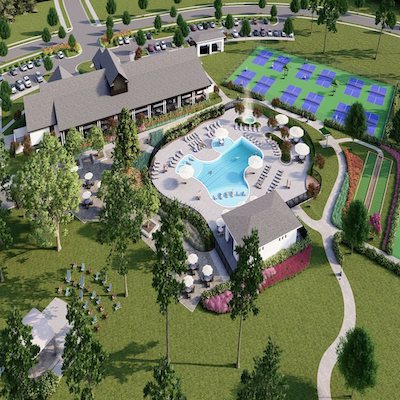

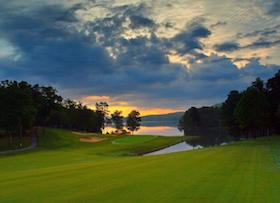
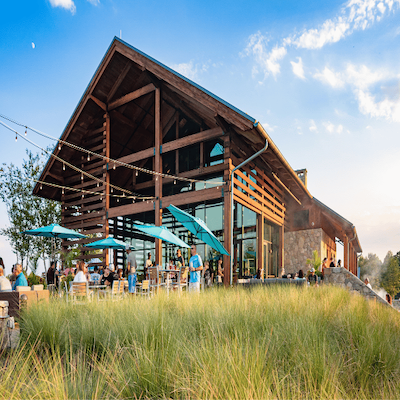

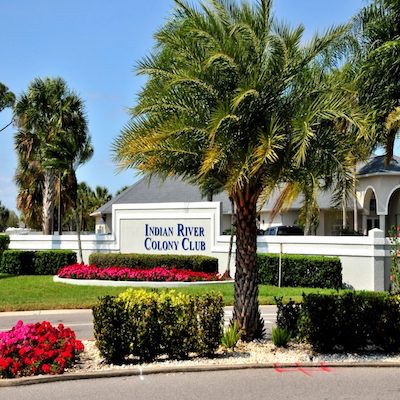
Comments on "10 Ways Retirement Living Will Change in the Future"
LS says:
What I would desire is probably not very different than what is available today. I would want a detached single level medium size home with a small fenced yard for the dog. It would have the outside maintenance done by the homeowners association including lawn mowing, leaf raking, planting flowers, snow removal, gutter cleaning, window washing, etc. It would be true lock and leave. There would be attractive amenities for the grand kids so they didn't dread coming to visit and maybe rental cottages for them to stay at with their parents. It would be 55+ but could also be part of a larger all-ages development with shared facilities. I'm eager to try pickelball but would also enjoy an executive 9-hole golf course. As long as we can drive, I wouldn't mind it being in a exurban area as long as there was medical facilities nearby as well as necessary stores and professional services available at a reasonable distance. When this lifestyle is no longer feasible, we both have long-term care insurance in case we need to move to assisted living, memory care or a nursing home.
Laney Humphrey says:
Excellent article! Mny of the options you discuss are already high on some people's want lists. I wish many alternative living situations were more available. I suspect zoning regulations and other regulatory issues get in the way of many of them - ADUs, multigenerational housing, pocket neighborhoods come to mind. As a side note, I've found it really hard to find information about some of them. Not nearly as easy as finding info abut active adult communities!
CR says:
First, Actual baby boomers were born 1945-1952 (there are stats to prove the numbers) anyone born from 1953-1968 are the siblings of the "boomeres". The marketing industry pushed the dates for branding. And most boomers pushed the status quo of our parents generation and as an actual baby boomer, who went from backpack to briefcase and then returned to a leather backpack are still driving change. We still have the most disposal income over our parents who are in their 80's & 90's and our children in their late 40's to early 50's. Many of us decided around our late 40's that we'd retire later in life and began to think about a third act career that's why many of us continue to stay in our homes in the cities we've lived in for the last 20 to 30 years. we have a network of friends, we volunteer and yes we are still working and haven't signed up for ss# , why because we can. Our generation lead and defined the movements; on woman's rights, equality, healthy living, child development and so much more. Some of us sold our companies between 2002- 2012 and did a mini retirement in our fifties. We played, traveled and consulted and then we decided to return to a more active work life that includes this time a more balanced lifestyle. So instead of renaming Retirement communities let's lobby our states, cities and yes the "gov" for more tax breaks, tax credits and insurance discounts for baby boomers. Some of us boomers are retired, some planning to retire in the next couple of years and some sure when if ever we'll retire, however we are still a force for change and the most resilient group.
MLW says:
I just moved from an over-55 community after living there 5 years. We bought a new home in a new neighborhood. It helped relationships that we were all new. We are of similar age though the gap could be up to 20 years and some were still working. The community, IMO, is suffering growing pains. The original infrastructure is 20 years old. Some amenities and often activities, like shows, are sold out, not well managed. No new amenities are planned. Amenities should keep up with the growth. That should be addressed to maintain the quality of life. I'd have liked more walking trails and bike trails. There were no official bike trails. Motorists in the community and area are intolerant of cyclists. Plus just riding the community roads is boring. Over-55 communities need more medical services, more doctors of all specialties. I saw that as a big problem in my area. For whatever reasons doctors are leaving or becoming concierge doctors or not accepting new patients. The area I lived in included lawn care but the service never did all they were supposed to(weeding original landscaping beds) or did it poorly(lawn mowing). That would be a big help to us as we aged. One of the most disconcerting aspects was that some residents expressed a great dislike of having children's hours at the pools(it varied by day so no one pool had children every day). This was our home yet some made me feel my grandchildren were unwelcome to visit my home. While an over-55 community has many good aspects at this stage of our lives(66 & 70) it's not for us.
Dave says:
Good article. I really think colleges and universities could provide an ideal setting for vertical communities. As enrollment of the traditional student population continues to decline, I believe vacant dorms could be converted into apartments for seniors and could include food services, health care, contnuing education, musical and athletic events, etc. I know there are campuses that have begun this process and it might develop into an interesting alternative for retirees in the future.
Steven Kaufman says:
Dave,
Would you mind referencing the article you are talking about. I’m very interested in that vertical demographic concept.
Steven Kaufman
Laney Humphrey says:
MLW, reading your comment caused me to think of the similarities between active adult communities and malls. They are both privately developed and owned. The active adult communities become like small towns and malls often have become the "downtowns" of their surrounding municipalities. But, being privately owned, there is not much oversight over how they are run, including how they manage their resources or meet the needs of their residents or shoppers. In a general sense, they are driven by profit, not by the good of the people as a bona fide municipality with a functioning downtown is. The birth-youth-maturity-age-death cycle is human but also true of places we live. No matter how we might wish it differently, those in charge of malls, active adult communities and towns are always a little behind the curve of peoples' changing needs and desires. But they do keep trying to offer what people want. If they fail, people move. Congratulation on finding a new place that better suits how you want to live.
Jean says:
A few friends and I hoped had a pool to win that BIG lottery and if we did our plan was to buy (or build) a bunch of houses along the same street or a nice apartment building and form a coop of sorts. We'd all have out own "place" as would some family and other friends if they wanted to join in. We'd hire a few home aides to help with whoever and whatever might need some help. as a coop, we'd all have some say into who could buy in as units were vacated. :)
Steve Methiew says:
Yes you are right mostly people will prefer to stay where they live now because after retirement they have no other choices but if they have enough saving then they can move anywhere where they want within the budget.
Kate says:
We recently moved from a condo for several reasons. Often condos have to be built on the outskirts of town so it was necessary to drive to everything. The condo management agency ironically didn’t know how to properly maintain the property. We could see over time the development was going down. They don’t sell the condos so they really didn’t care about things like curb appeal. Hiring a different management company is easier said than done. My husband was on the board. There just aren’t that many qualified ones around. It took several years but we found our small retirement dream home. It’s in the village and walking distance to everything. Our front and back yard is tiny so low maintenance there. I easily get my steps in just by walking to the store and at the numerous Metroparks that surround us. I would only go back to a controlled living environment again if down the road it was absolutely necessary and that would be an apartment. I find them to be very isolating. We have incredible programs offered through the parks and rec department and our fabulous libraries, a lovely church that offers opportunities to do charitable work and a terrific historical society. No, it’s not in the southern region. We lived there. We’ll never move to an area that you need an evacuation plan again. We were young and able bodied at the time. I can’t imagine elderly people dealing with that. We live in a true vibrant village that offers everything we need for pleasure and necessities. It’s still possible for others.
Jeb says:
Kate
It sounds just like what I'm interested in. Would you feel comfortable naming the area?